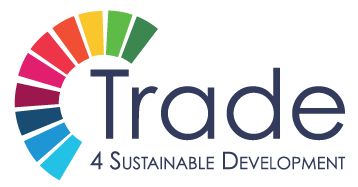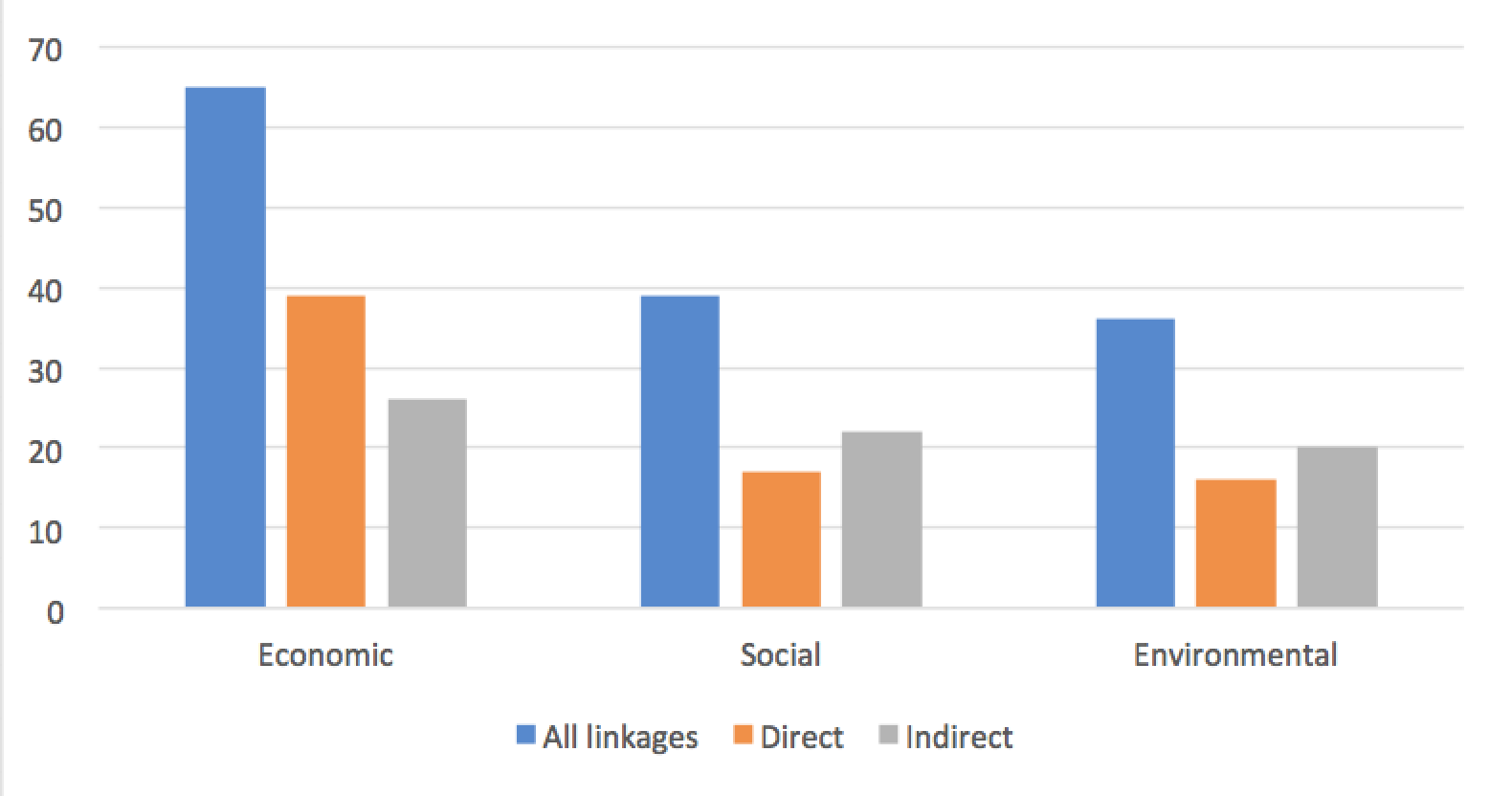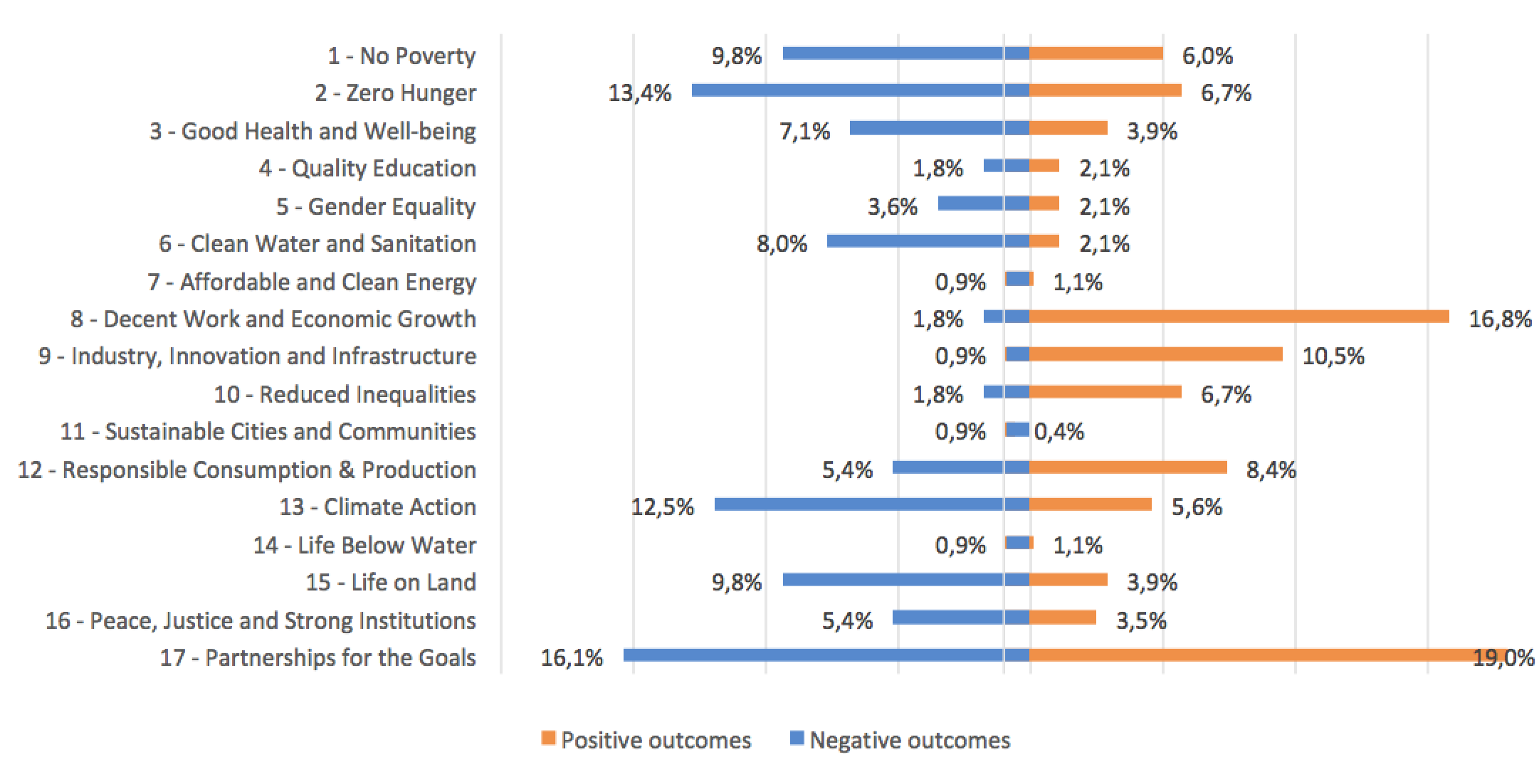Ellen Huan-Niemi, Sophia Davidova, Attila Jambor
TRADE4SD has just published a deliverable (D1.1) analysing the relationship between global agri-food trade and sustainability. It will help to better understand how and in what ways agri-food trade is directly and indirectly related to the different Sustainable Development Goals (SDGs) and how these linkages differ by region or value chain, depending on the economic, social, and environmental contexts.
Economic sustainability issues are predominant
Based on word counts and appearance frequencies, three dimensions of sustainability are identified with nine topics representing the most important avenues through which agri-food trade and the SDGs are interrelated: (1) markets and value chains, (2) economic development and growth, (3) policies and governance, (4) food and nutrition security, (5) labour and employment, (6) livelihoods and wellbeing, (7) biodiversity, (8) GHG emission, pollution and deforestation and (9) renewable energy. The literature review discovered that the economic sustainability issues have been predominant in the literature, followed by the social and environmental sustainability, suggesting that academic interest mainly concentrate on economic issues when analysing the nexus between trade and sustainability (see Figure 1 below).
Figure 1: Direct and indirect linkages between agri-food trade and the SDGs identified in the literature according to the different dimensions of sustainability (Source: TRADE4SD results)
More positive than negative outcomes in the analysed literature
It is evident from the literature review that trade has different impacts on the SDGs, and there are many trade-offs between the different SDGs. Therefore, the achievement of different SDGs requires a holistic framework and a one-size-fits-all trade policy cannot be a solution to achieve the global sustainability agenda.
The literature review found that trade has more positive than negative outcomes in the analysed literature. Most of the positive outcomes are related to SDG 17, SDG 8, and SDG 9, respectively. Meanwhile, the negative outcomes are mainly related to SDG 1, SDG 2, SDG 13, and SDG 15 (see Figure 2).
Figure 2: Shares of different SDGs in positive and negative outcomes (%) (Source: TRADE4SD results)
Interactions between trade and SDGs are context specific
One of the important lessons from previous studies is that the outcomes of interactions between trade and SDGs are context specific. The positive or negative outcomes depend on the economic development and political stability in different countries and regions, the types of global value chains, governance and institutions as well as policy induced market distortions. Liberalised and privatised agri-food sector along with good governance and institutions, liberalisation of international trade under the WTO, private and foreign direct investments, enforced public and private standards together with economic growth that is accompanied by environmental regulations and clean technology improvements are among the conditions conducive to positive outcomes. The correct political, economic, and social circumstances are needed to reduce the likelihood of potential negative linkages between trade and sustainable development in order to promote conditions that foster more positive outcomes. The ambition of TRADE4SD is to explore and foster the positive linkages between trade and sustainable development and to provide policy recommendations for the creation of new opportunities for actors involved in the global, regional, and national agri-food value chains.
Ellen Huan-Niemi
Senior Scientist, LUKE
Sophia Davidova
Professor, University of Kent
Attila Jámbor
Professor, Corvinus University of Budapest




Leave a Reply